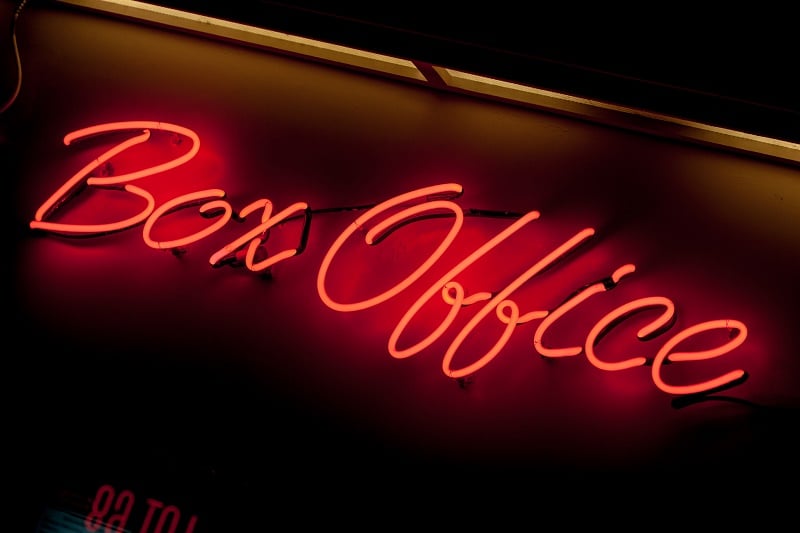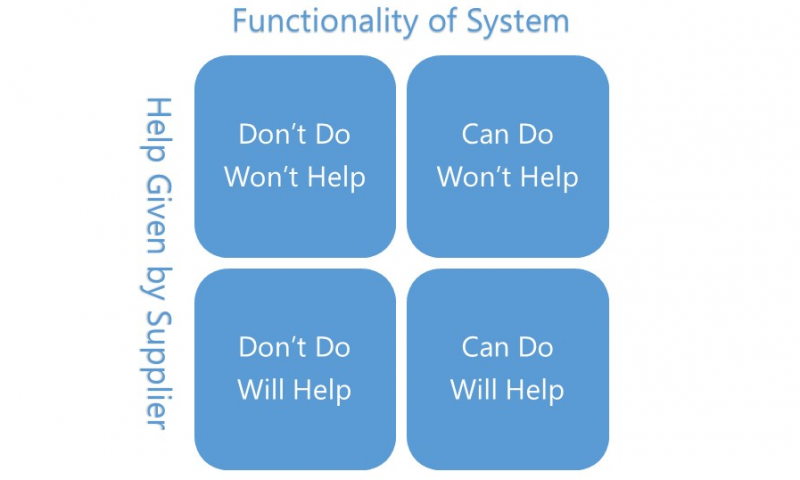
Photo: Jeremy Brooks via flickr.com (CC BY-NC 2.0)
Making ticketing work smarter
Cutting-edge technologies are bringing about a box office data revolution. Andrew Thomas and Roger Tomlinson reveal how arts organisations are increasing audience engagement and reaping financial rewards.
It’s all about money isn’t it? ‘Make more; spend less.’ Whether a funded arts organisation or a commercial venture, you will have no doubt heard this from board, trustees, council members, executives, even customers, perhaps.
But is this true? Has the marketing and ticketing function become just another tool for extracting money from the potential audience, whilst spending as little as we can? Are we growing audiences for their engagement in our work, or the pounds in their pocket?
Lose the ‘T’ word
The challenge for system suppliers is to maintain their place in the functionality / helpfulness matrix
Money is a key driver, especially given funding uncertainties, but working smarter should also be about helping organisations achieve more, be more efficient and do more with less. Especially in terms of building relationships with the public and deepening engagement.
It’s a chicken and egg situation. We need to engage our audiences, before, during and after any ‘sale’ – first and foremost, attending is the result we want. And instead of talking about ‘ticketing’, we should lose the T word and start talking in terms like audience development, customer relationship management and engagement, which encompass all the loyalty, fundraising and other interactions with customers.
The advent of online ticket sales as the primary sales channel has irrevocably changed the role of ticketing staff. It has reduced the hours of box office staff and placed an emphasis on managing sales and the customer database.
Ticketing is now at the heart of data processing in all customer-facing touch-points. Access to the database probably happens in every customer interaction these days, including front of house, bars and restaurants, and venues that have not integrated all those functions that centre on or around ticketing will struggle.
Looking for a good match
How smartly venues are able to work is heavily influenced by the software they choose, and crucially, their suppliers. The list of things that box office software can (and can’t) do is huge these days.
Our Functionality Builder system – designed to take the guess work out of selecting a new ticketing or CRM platform – now lists more than 650 capabilities. A few systems offer very comprehensive functionality, but most suppliers sit somewhere on a ‘quadrant of truth’, in terms of the functionality of their system and the extent to which they provide help to tackle problems. Some suppliers have items of functionality that their systems can’t do, but will still help users tackle a problem.

Some of the ‘best’ systems seem hampered by users’ difficulties in getting the best out of them. Just because a system does something, this does not mean that an organisation’s staff will find it easy to use. And no matter how helpful a supplier’s staff, the end result depends upon users and what they can do.
The challenge for system suppliers is to maintain their place in the functionality/helpfulness matrix, ensuring users can work smarter, being helpful, whilst keeping prices down. That means their ability to engage and relate directly to users, helping to train and develop staff skills, is crucial.
Joined-up systems
What users want these days is joined-up thinking, which in most organisations means joined-up systems. The aim is for organisations to build a ‘database of truth’ with a 360-degree view of all those they interact with – cutting out key-strokes when data is fed from one application to another – so that every person in the organisation can have the same data view of the customer. To achieve that requires a combination of software and training.
Different systems will suit different organisations, depending on their scale, their complexity, the number of events they present and tickets they sell, and whether they have membership or loyalty schemes and subscription packages.
Some systems now have the virtue of easier interfacing with other software solutions such as hospitality systems, accounting, etc. TopTix and their SROv4 is an example. While others are offering more comprehensive joined-up solutions inside one system, for example PatronBase and its WebHub, merchandising, hospitality and fundraising modules.
There are other suppliers who have majored on their relationship with their ‘network’ of users to ensure they are meeting their needs in a community of support, such as Tessitura. Some, such as Spektrix, have focussed on their cloud-based intensively staff-supported solution.
Monad has re-thought the approach to the user interface with innovation steadily driving expansion, especially in dynamic pricing.
Red61’s Via, which is the power behind the ticketing for the Edinburgh Festival Fringe, handles the largest volumes of events and sales of any festival and can service a remarkable range of outlets with full service. These are just a few examples.
Data revolution
The result of all this is a potential data revolution on the desktops of staff in arts and entertainment organisations. According to suppliers, it is the level of competence and expertise among users of their systems that is now the main barrier to working smarter – not only having the right tools, but also the right staff with the right skills.
With both in place, powerful audience data analysis and segmentation tools such as Audience Finder from The Audience Agency can not only benefit venues, but also touring companies. ‘Under-the-bonnet’ sales analysis, of the kind that Baker Richards’ Revenue Management Application enables, can empower organisations to plan their marketing using real evidence and hard data, helping everything from revenue management to segmenting customers and targeting.
Carefully executed analysis of the customer database and past sales can enable more precisely targeted and tailored bespoke campaigns sent to fewer people with higher response rates. Prices can be set for the run of a production to ramp up sales and improve attendances at less attractive times and increase earned income at the most popular times. Loyalty schemes can lead selected customers into a ‘walled garden’ from where more personalised and actively engaged marketing can be pursued. And of course, organisations can follow the money in terms of memberships, donations, cultivating ambassadors and sponsors.
It is about money, isn’t it?
Andrew Thomas and Roger Tomlinson run The Ticketing Institute.
theticketinginstitute.com
Andrew: [email protected]; @TicketTattle; 07900 231118
Roger: [email protected]; @BrandinyourHand and @TicketingInst
Meet Andrew and Roger at their Ticketing Professionals Express pop-up event in Edinburgh before the AMA Conference on 12 July 2016.
Read more about the latest box office developments in ArtsProfessional's Making the most of the box office special feature.
Join the Discussion
You must be logged in to post a comment.